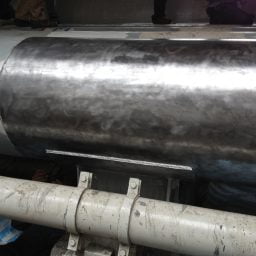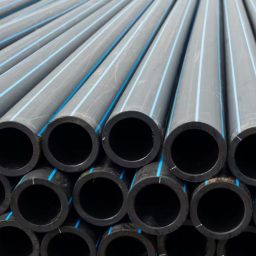News
Atmospheric Corrosion Detection of LNG Assets with Artificial Intelligence
Abstract
Atmospheric corrosion is the biggest asset integrity threat to offshore LNG platforms and onshore LNG processing facilities located along the coast. Manual inspection of LNG equipment is labourintensive, subjective, and provides incomplete asset coverage, increasing the risk of unplanned shutdowns. Computer Vision algorithms can be used to detect corrosion, enabling high-risk equipment to be targeted for remediation. This article covers the first-in-industry application of an artificial intelligence-based system to improve corrosion management and inspection processes of LNG assets. The system has been trialed on LNG plants demonstrating greatly improved inspection and maintenance processes while reducing the operating costs and risks associated with operating LNG assets.
Introduction
External corrosion on LNG plants is one of the biggest threats to asset integrity and its management is a large operational expense. Many operators now implement risk-based assessment programs where all equipment is assessed periodically with the aim of reducing operational costs while maintaining integrity. In practice, visual inspection on a large LNG plant does not give visibility to the condition of the equipment for the entire plant since equipment and infrastructure layout can be complex, with equipment at-heights, spanning over water, or being in difficult to access areas. This can make inspections costly, time consuming, and yield varying quality of results. Variance across inspections can arise from the inspector’s subjectivity, the environmental changes, and the present working conditions around the platform or plant. Inspectors must sometimes access equipment that is difficult to access or see, making close assessments difficult.
An effective asset integrity monitoring requires full visibility of asset and equipment conditions. Prioritizing non-destructive examination (NDE) on high consequence of failure or high likelihood-offailure equipment results in effective risk reduction and improved fabric maintenance planning. For instance, high consequence-of-failure equipment (such as a high-pressure gas line) with severe corrosion must be addressed as soon as possible. Further, prioritization of a complementary painting/ remediation program is also critical to preventing assets reaching this level of deterioration in the future. By prioritizing the remediation of high-risk assets and optimizing the remediation process, the overall risk decreases significantly, and the cost of remediation and inspection continues to decrease with each re-inspection.
The automatic detection of corrosion in images has become possible recently using neural networks for the detection of corrosion and cracks on steel in LNG plants. A Convolutional Neural Network (CNN) can be used to classify an entire image as either containing rust or no rust. CNNs classify pixels in an image using semantic segmentation as either containing rust or not, giving a detailed understanding of the equipment.
All inspection imagery is processed using automated corrosion detection algorithms, which localize and categorize corrosion across the facility by severity. Figure 2 beloe shows an example of detected and classified corrosion, overlaid on inspection imagery, with atmospheric corrosion severity represented by colour. A user can virtually walk through the inspection data, and be directed to equipment, such as equipment where heavy corrosion has been detected.

Figure 2. Automatically detected corrosion, overlaid on some inspection imagery. Corrosion severity is shown by color: light (cyan), medium (yellow), and heavy (red). Inactive corrosion and staining are not considered by the model.
Advantages of CNN for Classifying Corrosion
The advantages of CNN for classifying corrosion include the following:
- A cost reduction of inspection programs when using the AI-based system vs. traditional manned visual inspections
- Increased inspection coverage when using the AI-based system vs. traditional manual visual inspections
- A decrease in the required manpower on an offshore platform required to conduct general visual inspections (GVIs)
- The reduction of risk across a platform through the prioritization of inspection and remediation
- The benefits associated with better prioritization and optimization of re-painting campaigns
- The benefits associated with the improved optimization of asset maintenance
Due to the spacing of scans, equipment often appears in multiple views (i.e., it is common for equipment to be imaged from multiple angles and at various distances). Since all inspection imagery is spatially located within a common frame of reference, it is possible to combine the multiple inspection viewpoints and predictions together to produce a single, comprehensive 3D-visual dataset of the asset, as seen in Figure 3 below.

Figure 3. Multiple viewpoints of the same piece of equipment (here, valve “4010-033,” highlighted in the purple) are automatically found and the detected corrosion statistics are aggregated. The total observed asset area, the area of detected corrosion, an other useful information are displayed. This valve is captured from 38 different views in total, and three of those are shown here.
Combining multiple views has many benefits. For example, if a portion of some equipment piece is obscured at a single scan location, it is often visible in neighboring scans. This process reduces the impact of camera obstructions and helps to maximize coverage of the equipment and the platform. Furthermore, corrosion predictions from multiple viewpoints can be merged via various statistical methods to further refine predictions and increase the accuracy of classification. Figure 4 below shows aggregate corrosion metrics produced from three (of 38) separate views that have been statistically combined.

Figure 4. Equipment overlays for all pressure equipment. All detected corrosion is associated with an individual piece of equipment and can be searched for in the anomaly register.
By associating captured imagery and with the corresponding laser data, it is possible to calculate the physical area, dimensions, and location of detected corrosion. Providing area measurements enables improved estimation of damage and prioritization of remediation for individual pieces of equipment.
Detected corrosion anomalies are registered to individual pieces of equipment, making it possible to quickly search and show the state of every item on the platform. Association of anomalies with equipment identities allows condition reports for all equipment on a platform to be provided by the operator. Individual objects can be queried and filtered (for instance, by pipe diameter, pressure, piping class, and/or service designation). For example, the user can query all lines of the “highpressure gas” service type which have any severe atmospheric corrosion. These can be then scheduled for priority remediation. From the automatic detection of corrosion and coating condition in inspection imagery by the AI-based system, inspection workpacks are created to facilitate NDE and remediation of faults.
Conclusions
A major cost reduction of inspection programs is achievable for LNG assets when using the AI system vs. traditional manual visual inspections. Furthermore there is significant reduction of risk across a platform/plant through the prioritization of inspection and remediation. Additionally there are major benefits associated with prioritization and optimization of painting campaigns, and benefits associated with the optimization of platform maintenance programs.
Manual offshore platform topside equipment inspection is costly, time-consuming, and labourintensive. Moreover, inspection findings are subjective and provide incomplete asset coverage, leading to an increased risk of unplanned shutdowns due to missed repairs. Leveraging state-of-the-art machine learning algorithms to detect and classify corrosion across the entirety of a facility, along with contextualization through visual asset tagging, allows for the objective and comprehensive management of corrosion across all process equipment.
The AI-based system provides greater inspection coverage; reduces the required number of personnel on board for general visual inspections; reduces the overall cost of inspections; reduces the risk of unplanned production downtime; and significantly reduces the financial risk associated with managing LNG asset integrity.








